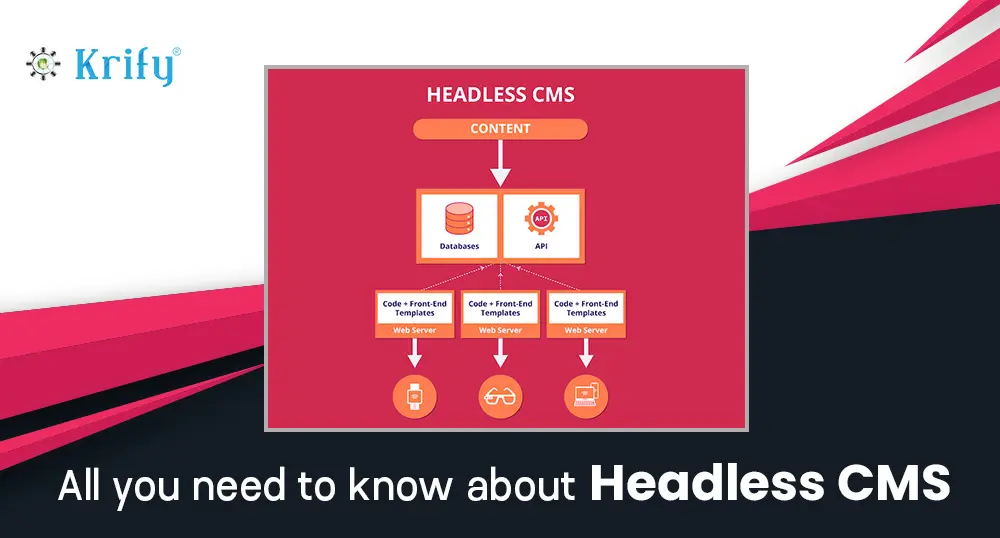Headless CMS! Yes it is. You may not be familiar with the Headless CMS, but let’s check with the development community and developers, they give a clear description of what it is all about. So, is it the CMS (content management system) without ahead? It sounds weird. Let’s not deviate from the topic and try to understand all about Headless CMS.
What is Headless CMS
It is a back-end CMS created from scratch, offering content access via a RESTful API for display on any device. Unlike traditional CMS with a “head,” it lacks front-end components like templating systems and frameworks. These tools aid in content development and display on chosen platforms.
Features of a Headless CMS
API Functionality:
One of the important functionality that separates headless CMS from traditional CMS is the API. It is capable of integrating various languages and frameworks. The APIs enable the creation of multiple front-end delivery systems, facilitating content delivery to various platforms.
Content Model Creation:
The way your content is structured in Traditional CMS has some limitations due to its predefined content modules. So you can make use of headless CMS as it enables you to create unlimited content to deliver it on your own platforms.
Asset Management:
Through asset management, you can manage your content or files and save over the cloud on one system in Traditional CMS. But with the use of headless CMS, you can read, write, update, and delete content.
Multi-language Publishing:
One of the greatest advantages is publishing content across different platforms and in various languages, with just a little assistance from APIs.
Benefits of Headless CMS
Easy Implementation:
When compared to traditional CMS, in order to implement the content in each platform, it is necessary to reimplement the tool each time. While a headless CMS doesn’t have a front end delivery system, so no reimplementation is required.
User Friendly:
In a traditional CMS, there is a lot of code and content required to build a content management system over a website. In a headless CMS, management is simplified with minimal code required, unlike traditional approach.
Faster Deployment:
Considered to have better features than traditional CMS, it can efficiently organize tasks and facilitate collaborative work between content creators and developers. So this feature of headless CMS allows us to create a quick and faster content deployment.
Omnichannel-friendly:
As the content is sensitive, it permits regeneration across various channels where users are most engaged, such as mobile, social media, and virtual reality.
Conclusion:
To manage web content, a content management system is essential, whether traditional or headless. The decision on the best option depends on the requirements communicated by higher authorities.
Krify is a skilled mobile and web app development company, dedicated to delivering flawless applications that meet client expectations. With expertise in CMS, and Microservice-based applications, we offer a 30-minute consultation for website development needs. Contact us for more information.



